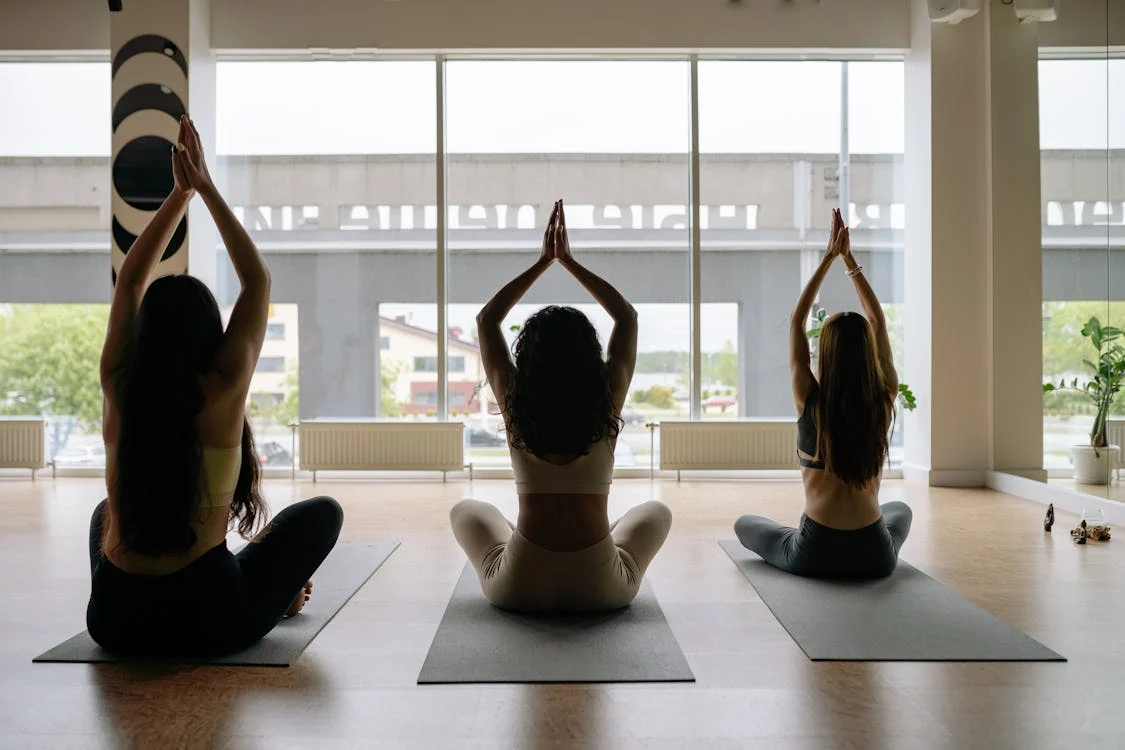What Is Slow Flow Yoga ? – Slow flow yoga is a gentle and mindful approach to movement that combines fluid transitions between poses with a focus on breath. Unlike more vigorous styles, this practice invites you to slow down, allowing you to connect deeply with your body and mind.
When you step onto your mat for a slow flow session, you might find that each movement is deliberate and measured. This practice often emphasizes mindfulness, making it an excellent choice for those looking to cultivate a deeper awareness of their breath and body.
Key Features of Slow Flow Yoga
- Emphasis on Slow Movements
Each pose flows into the next at a relaxed pace. This allows for greater attention to alignment and detail. - Connection Between Breath and Movement
In slow flow yoga, every inhalation and exhalation guides your movements, fostering a harmonious balance. - Mindfulness and Meditation
Practitioners often use this style to meditate, creating a serene space to reflect and reconnect with oneself.
Slow flow yoga is perfect for individuals at any level, especially those new to yoga. It offers a nurturing environment where you can explore your body’s capabilities without the rush often found in faster-paced classes. If you want to learn more about foundational practices, check out what is somatic yoga.
Benefits of Slow Flow Yoga
- Physical Benefits
- Increased Flexibility: The slow pace allows your muscles to relax and stretch effectively.
- Strength Building: Holding poses for longer can enhance muscle endurance.
- Mental Benefits
- Stress Reduction: This calming practice can help alleviate anxiety and promote relaxation.
- Enhanced Focus: The mindfulness element encourages mental clarity and presence.
- Suitable for Beginners
- Slow flow yoga is welcoming and adaptable, making it easier for newcomers to understand the fundamentals of yoga. If you’re just starting your yoga journey, consider checking out how to become a certified yoga instructor.
How Slow Flow Yoga Differs from Other Styles
When compared to vinyasa yoga, which is more dynamic and involves quicker transitions, slow flow yoga allows for a more leisurely exploration of each pose. This gentle flow is also different from restorative yoga, which focuses primarily on relaxation and long-held poses. Slow flow blends movement with mindfulness, offering a unique experience that encourages self-discovery and reflection.
Recommended Poses for Beginners
If you’re just starting with slow flow yoga, here are some foundational poses you might encounter:
- Cat-Cow Stretch: A great way to warm up the spine.
- Downward-Facing Dog: A staple pose that builds strength and stretches the body.
- Child’s Pose: A restorative pose to relax and reset.
Tips for Practicing Safely:
- Listen to your body and adjust poses as needed.
- Focus on your breath to guide your movements.
- Don’t hesitate to use props like blocks for support.
If you’re interested in exploring this tranquil practice further, Certified Yoga Teacher offers a range of online classes tailored to different skill levels, including slow flow sessions that can fit right into your routine. You can also find related insights on how often should you do yoga.
Exploring the Benefits of Slow Flow Yoga
Slow flow yoga offers a plethora of benefits that go beyond physical flexibility and strength. By integrating mindfulness and gentle movement, you cultivate a holistic practice that nurtures both body and mind.
Physical Benefits
- Improved Posture: Regular practice helps to align your spine and shoulders, promoting better posture in daily life.
- Enhanced Balance: The focus on slow transitions strengthens stabilising muscles, improving your overall balance.
- Injury Prevention: With its low-impact nature, slow flow yoga can help reduce the risk of injuries, making it a safer option for many.
Mental and Emotional Benefits
- Mindfulness: The slow pace encourages a meditative state, enhancing your awareness of thoughts and emotions.
- Emotional Release: By connecting breath with movement, you may find it easier to process and release pent-up emotions.
- Self-Compassion: The non-competitive nature of this practice fosters self-acceptance and kindness towards oneself.
How to Incorporate Slow Flow Yoga into Your Routine
- Set Aside Time: Try to dedicate at least 20-30 minutes a few times a week for a slow flow session.
- Create a Peaceful Space: Find a quiet area at home where you can practice without distractions.
- Use Props: Don’t hesitate to use blocks, straps, or cushions to support your practice and enhance comfort.
As you go deeper into this practice, consider joining an online class tailored for all levels, like those offered by Certified Yoga Teacher. You can explore various styles and find the one that resonates most with you. Check out how hot is hot yoga to discover different yoga modalities.
Sample Slow Flow Sequence
- Start with a few minutes of deep breathing: Focus on inhaling and exhaling fully to centre yourself.
- Cat-Cow for warming up: A few rounds will help mobilise your spine.
- Transition into Downward Dog: Hold for several breaths, feeling the stretch in your hamstrings.
- Move into a gentle Warrior II: This pose builds strength and focus.
Practicing these poses mindfully will deepen your experience and help you connect with your inner self.
In summary, slow flow yoga is a beautiful way to embrace movement with intention and grace. Whether you’re seeking relaxation, stress relief, or a stronger body, this practice can be a wonderful addition to your routine. If you’re curious about related styles, check out what is gentle yoga.
This journey of self-exploration and mindfulness awaits you on the mat. Would you like to explore more about other yoga styles or practices?

